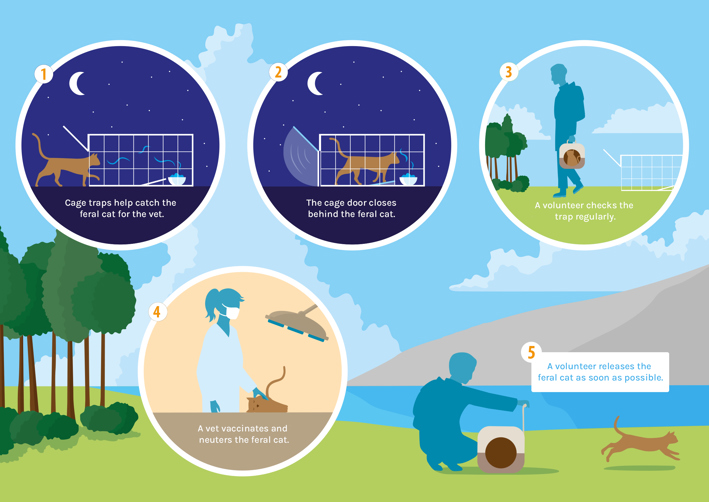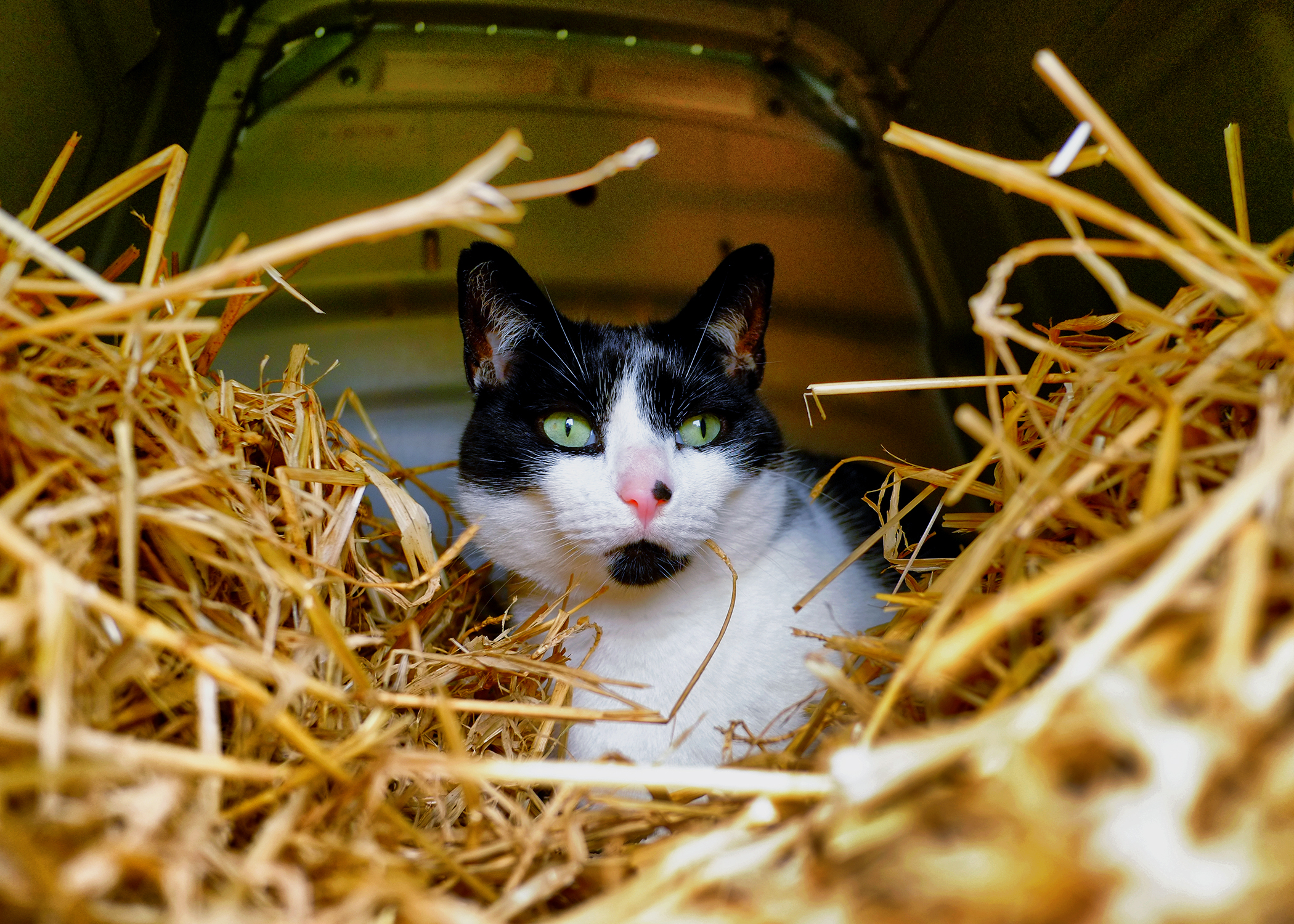Trap, Neuter, Vaccinate, Return
Feral domestic cats can pose a significant threat to wildcats.
Wildcats are now on the brink of extinction in Britain following widespread population declines as a result of centuries of persecution and habitat loss. More recently, the critically endangered wildcat population in Scotland has become increasingly threatened by interbreeding (also known as hybridisation) with feral domestic cats. Feral domestic cats and wildcats are different species, but they can interbreed and produce viable and fertile offspring. As the number of hybrid cats increases and the number of wildcats has declined, the wildcat gene pool has become increasingly diluted and the wildcat is now at risk of genetic extinction. Additionally, feral domestic cats can transmit infectious disease to wildcats.
Therefore, an integral part of the Saving Wildcats project is a feral cat Trap, Neuter, Vaccinate, Return (TNVR) programme in Badenoch and Strathspey. TNVR is a safe and humane non-lethal way to manage feral domestic cat populations. A small, healthy population of neutered and vaccinated feral cats pose no threat to wildcats and may help to protect wildcats by maintaining territories and keeping un-neutered feral cats out.
Responsible pet cat ownership, including neutering, vaccination and microchipping, improves pet cat health and is also vital to ensuring that our plans for wildcat restoration are successful. We recommend all pet cat owners contact their veterinary practice for advice on responsible cat ownership.


